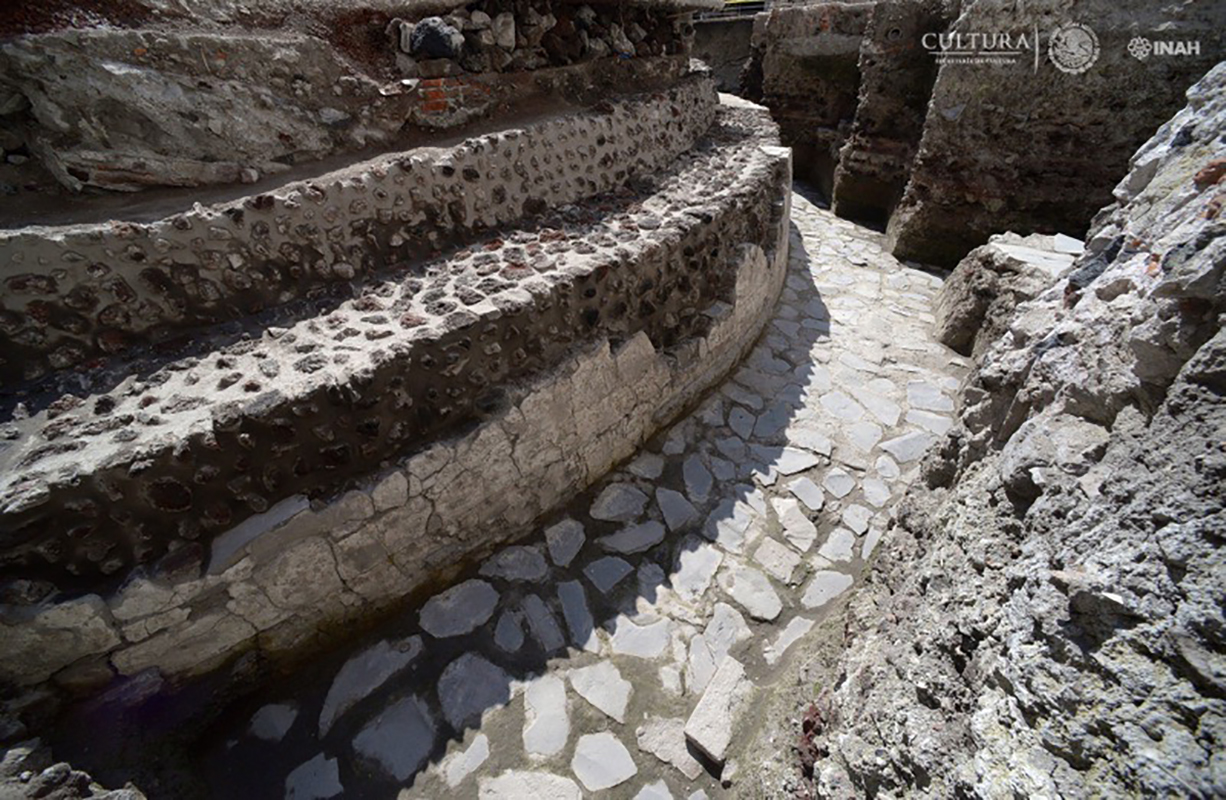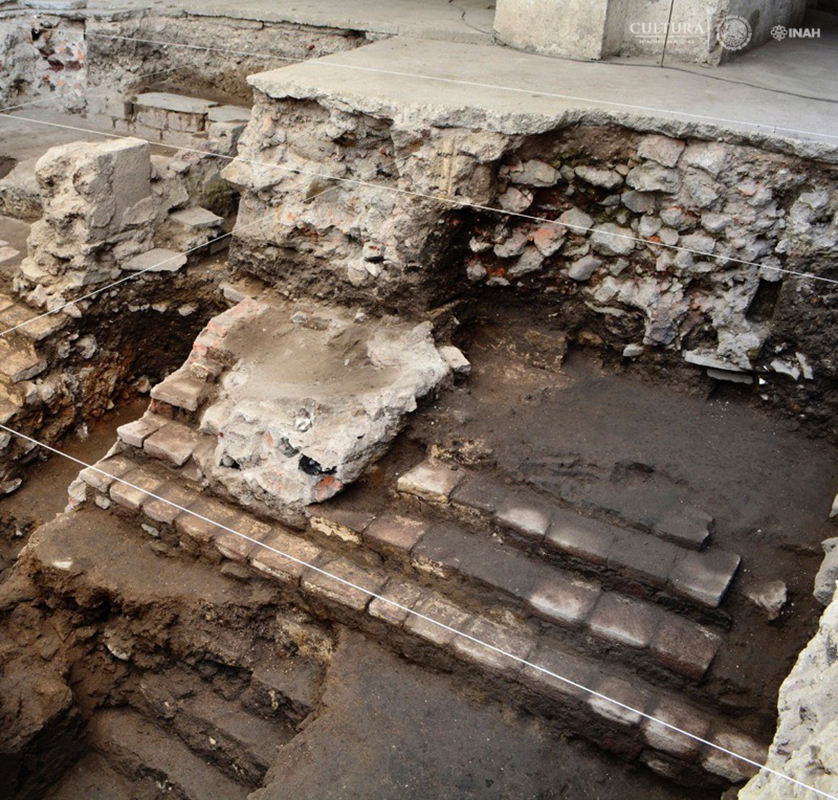Aztec Temple in Mexico City Contains the Remains of Sacrificed Children

An ancient ceremonial ball court and an Aztec temple dedicated to the wind god Ehécatl have been identified in what is now a modern section of Mexico City.
The 118-foot-long (36 meters) temple and the nearby 30-foot-wide (9 m) ball-court platform were shown to members of the media on June 7, officials with Mexico's National Institute of Anthropology and History (INAH) announced in a statement.
And close by the ball court lay a grisly surprise: sets of neck bones representing about 30 individuals, all infants and children, INAH officials said in the statement.
Researchers identified the temple and ritual ball court after seven years of work as part of an excavation project that began 25 years ago. The project, called the Programa de Arqueología Urbana (PAU), or Urban Archaeology Program, is uncovering the remains of the Aztec capital Tenochtitlan, which was razed in 1521 by Spanish explorer Hernán Cortés.
The site where the temple was found spans seven blocks in Mexico City's historic district, and is located behind the Catedral Metropolitana. Both the temple and the ball court were likely in use from at least A.D. 1481 until 1519, INAH officials said.

Ehécatl was recognized as a god of benign winds that attracted rainfall, Eduardo Matos Moctezuma, researcher emeritus with the INAH, said in the statement. Behind the temple, archaeologists found representations of other deities — Tláloc, a god of rain and agricultural fertility, and the warrior god Huitzilopochtli, located nearby. This arrangement offered a glimpse of hierarchies and relationships within the pantheon of deities in Aztec society, Moctezuma said.
Attached to the large, rectangular temple platform were two circular structures connected by a walkway measuring about 3.6 feet (1.1 m). Near the ball-court platform were the remains of stairs, which players might have used to enter the court, according to Moctezuma.
Sign up for the Live Science daily newsletter now
Get the world’s most fascinating discoveries delivered straight to your inbox.
Under the floor of the ruined stairway, archaeologists found the collection of children's neck bones, which might have belonged to sacrificial victims who were decapitated as offerings to accompany the ritual game, Reuters reported.
Original article on Live Science.

Mindy Weisberger is an editor at Scholastic and a former Live Science channel editor and senior writer. She has reported on general science, covering climate change, paleontology, biology and space. Mindy studied film at Columbia University; prior to Live Science she produced, wrote and directed media for the American Museum of Natural History in New York City. Her videos about dinosaurs, astrophysics, biodiversity and evolution appear in museums and science centers worldwide, earning awards such as the CINE Golden Eagle and the Communicator Award of Excellence. Her writing has also appeared in Scientific American, The Washington Post and How It Works Magazine. Her book "Rise of the Zombie Bugs: The Surprising Science of Parasitic Mind Control" will be published in spring 2025 by Johns Hopkins University Press.









